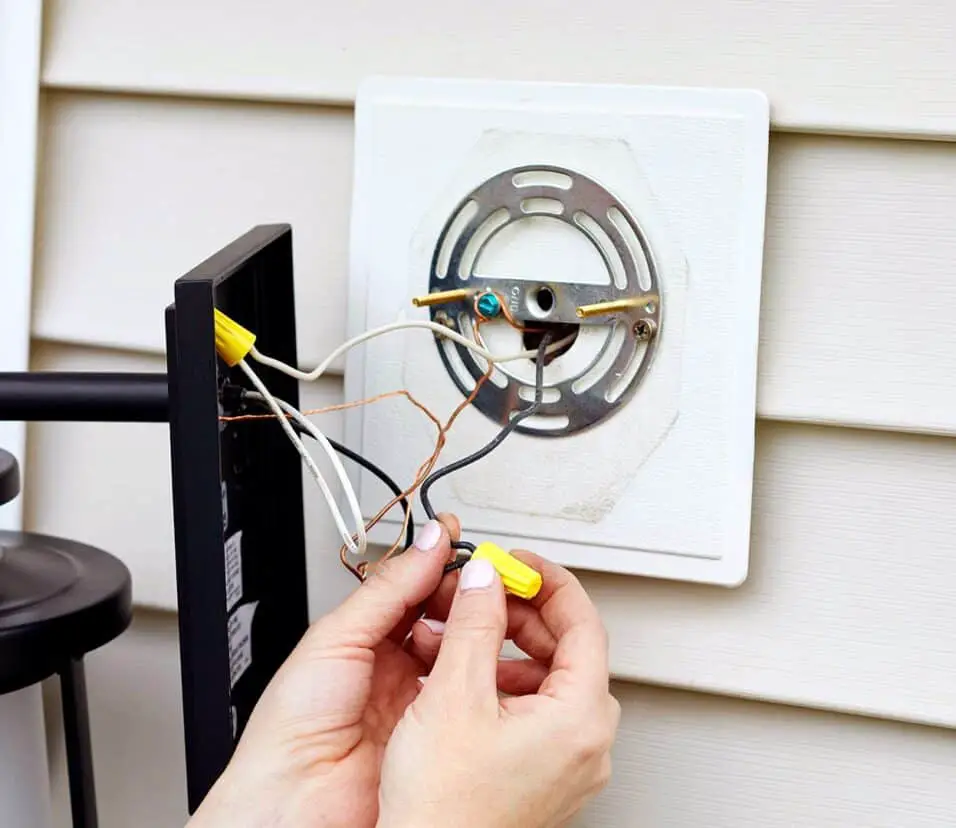How To Paint Exterior Trim
Introduction
How To Paint Exterior Trim: Painting the exterior trim of your home can be a great way to freshen up its appearance and increase its curb appeal. Whether you’re looking to update the color of your trim or simply give it a fresh coat of paint, this task can be accomplished with a little bit of time and effort.
Preparing the Surface: Before you begin exterior paint, it’s important to properly prepare the surface of your exterior trim. This involves cleaning the trim to remove any dirt, dust, or debris that may be present. Start by using a mild detergent and water solution to scrub the trim, and then rinse it thoroughly with clean water. Allow the trim to dry completely before moving on to the next step.
Next, you’ll need to inspect the trim for any signs of damage or decay. Look for areas that may be cracked, peeling, or rotting, as these will need to be repaired before painting. Use a putty knife to scrape away any loose or damaged paint, and fill in any cracks or holes with a suitable wood filler. Once the filler has dried, sand the surface smooth to create an even base for the paint.

What kind of paint do you use on outdoor trim?
That said, oil-based paint is still ideal for certain exterior painting projects. Oil-based paints shrink less than latex and acrylic paints do, hold up in high-traffic areas and glide on smoothly. Oil-based paint dries to a smooth, hard surface and works well on porch floors, doors, trim and other small details.
When it comes to painting outdoor trim, it is important to choose the right type of paint that can withstand the harsh elements and provide long-lasting protection. The type of paint you use on outdoor trim can greatly impact its durability and appearance. Therefore, it is crucial to select a paint that is specifically designed for outdoor use.
One of the most commonly recommended types of paint for outdoor trim is acrylic latex paint. This type of paint is known for its durability and flexibility, making it ideal for use on trim that is exposed to the elements. Acrylic latex paint is water-based, which means it is easy to clean up and dries quickly. It also offers excellent adhesion and resistance to cracking, peeling, and fading.
Another option for outdoor trim is oil-based paint.
Oil-based paint provides a hard, durable finish that can withstand extreme weather conditions. It is particularly suitable for trim that is exposed to direct sunlight or heavy rain. Oil-based paint takes longer to dry compared to acrylic latex paint, but it offers superior protection and a smoother finish.
When choosing paint for outdoor trim, it is important to consider the specific material of the trim. For example, if your trim is made of wood, you may want to opt for a paint that is specifically formulated for wood surfaces. This type of paint will provide better adhesion and protection against moisture and rot. On the other hand, if your trim is made of metal or vinyl, you may need a paint that is designed to adhere to these materials.
In addition to the type of paint, it is also important to consider the color. Lighter colors tend to reflect sunlight and heat, which can help prevent the trim from warping or fading. Darker colors, on the other hand, may absorb more heat and can cause the trim to expand and contract, leading to cracking or peeling. Therefore, it is advisable to choose a color that complements your home’s exterior and provides the desired level of protection.
Can I paint exterior door trim?
Before you paint exterior wood trim, it’s important to prime the surface. This will help to ensure that the paint adheres properly and that the color is more evenly distributed. Bare wood especially needs priming. Priming also helps to protect the wood from weather damage.
Yes, you can paint exterior door trim. Painting the exterior door trim is a great way to enhance the overall appearance of your home. Whether you want to freshen up the existing color or completely change the look, painting the door trim can make a significant difference. However, there are a few things you need to consider before starting the painting process.
Firstly, you need to prepare the surface properly. This involves cleaning the trim to remove any dirt, dust, or grime that may have accumulated over time. You can use a mild detergent and water solution to clean the trim, and then rinse it thoroughly. Once the trim is clean and dry, you may need to sand it lightly to create a smooth surface for the paint to adhere to.
Secondly, you should choose the right type of paint for the exterior door trim.
It is recommended to use a high-quality exterior paint that is specifically designed for trim. This type of paint is durable and weather-resistant, ensuring that your door trim will withstand the elements and maintain its appearance for a longer period of time. Additionally, consider the color of the paint and how it will complement the rest of your home’s exterior.
Thirdly, you need to protect the surrounding areas before you start painting. Cover any nearby surfaces, such as the door itself or the adjacent walls, with plastic or drop cloths to prevent any accidental paint splatters. You may also want to remove any hardware, such as doorknobs or hinges, to make the painting process easier and to avoid getting paint on them.
Lastly, when it comes to actually painting the exterior door trim, it is recommended to use a brush rather than a roller. A brush will allow you to have more control and precision, especially when it comes to painting intricate details or corners. Apply the paint in thin, even coats, and allow each coat to dry completely before applying the next one. This will ensure a smooth and professional-looking finish.
How do you paint exterior window trim?
Avoid dabbing the paint. Work around the window frame progressively outwards until you finish with the edge against the wall. For best results, lightly go over the wet area you’ve just painted using long brush strokes, then leave to dry. This will help achieve a smooth finish.
Painting exterior window trim is an important part of maintaining the overall appearance and condition of your home. Not only does it enhance the curb appeal, but it also protects the wood from weather damage. Whether you are painting the trim for the first time or giving it a fresh coat, there are a few steps you can follow to ensure a successful and long-lasting finish.
Preparation is key: Before you begin painting, it is crucial to prepare the surface properly. Start by cleaning the trim thoroughly to remove any dirt, dust, or debris. You can use a mild detergent and water solution or a specialized cleaner for exterior surfaces. Rinse the trim with clean water and allow it to dry completely.
Repair any damage: Inspect the trim for any signs of damage, such as cracks, peeling paint, or rot. Use a putty knife to scrape away loose or flaking paint. Fill any cracks or holes with a suitable wood filler and sand the surface smooth. If there is any rot, it is important to address the issue before painting to prevent further damage.
Protect surrounding areas:
Cover any nearby surfaces, such as windows, siding, or plants, with plastic sheeting or drop cloths to protect them from paint splatters. Use painter’s tape to mask off areas that you do not want to paint, such as the glass panes or adjacent walls.
Choose the right paint: Select a high-quality exterior paint that is specifically formulated for trim. Consider the type of material your trim is made of, such as wood or vinyl, and choose a paint that is suitable for that surface. Opt for a paint color that complements the overall color scheme of your home.
Apply the paint: Start by applying a coat of primer to the trim. This will help the paint adhere better and provide a more even finish. Once the primer is dry, apply the paint using a brush or roller, depending on the size and shape of the trim. Work in small sections, applying thin and even coats. Allow each coat to dry before applying the next one.
Does exterior trim need primer?
How to Paint Exterior Trim. If you’re installing new trim, prime it and paint one coat before you hang it. That way, you’ll only need to apply one more coat from a ladder. Don’t skip the final coat.
When it comes to painting exterior trim, one common question that arises is whether or not primer is necessary. The answer to this question depends on a few factors, including the condition of the trim, the type of paint being used, and personal preference. In some cases, using a primer can provide several benefits and help ensure a long-lasting and professional-looking paint job.
Primer serves as a preparatory coat that helps the paint adhere better to the surface. It creates a smooth and even base for the paint to adhere to, which can result in a more uniform and professional finish. Additionally, primer can help seal the surface and prevent moisture from penetrating the trim, which can lead to rot or other damage over time. This is especially important for exterior trim, as it is exposed to the elements and needs to withstand harsh weather conditions.
How to Paint Exterior Trim
Another reason why primer may be necessary for exterior trim is if the trim has been previously painted with oil-based paint. Oil-based paint can be difficult to adhere to, especially if you are using a latex-based paint for the topcoat. In this case, using a primer specifically designed to bond with oil-based paint can help ensure proper adhesion and prevent the new paint from peeling or chipping.
However, there are some situations where primer may not be necessary for exterior trim. If the trim is in good condition and has been previously painted with a compatible paint, you may be able to skip the primer step. Additionally, some paints are formulated to act as both a primer and a topcoat, eliminating the need for a separate primer.
Ultimately, the decision to use primer on exterior trim will depend on the specific circumstances and personal preference. If you are unsure, it is always a good idea to consult with a professional painter or follow the manufacturer’s recommendations for the paint you are using. They can provide guidance on whether or not primer is necessary and help ensure a successful paint job.
What is most durable exterior trim paint?
Semi-Gloss and Glossy Finish
Semi-gloss paint is less shiny than glossy paint. Because it’s durable and resistant to stains, it’s best for doors and trim work. For areas that are exposed to the elements, choose semi-gloss over glossy paint for its extra durability and longevity.
When it comes to choosing the most durable exterior trim paint, there are several factors to consider. The exterior trim of a building is exposed to harsh weather conditions, UV rays, and other environmental factors that can cause paint to fade, crack, or peel over time. Therefore, it is important to select a paint that is specifically designed to withstand these challenges and provide long-lasting protection.
One of the most durable exterior trim paints on the market is acrylic latex paint.
Acrylic latex paint is known for its excellent durability and resistance to fading, cracking, and peeling. It is also highly resistant to moisture, which is important for exterior trim that is constantly exposed to rain, snow, and humidity. Acrylic latex paint is also flexible, allowing it to expand and contract with the trim as it expands and contracts due to temperature changes.
Another durable option for exterior trim paint is oil-based paint. Oil-based paint is known for its exceptional durability and ability to withstand harsh weather conditions. It provides a hard, protective coating that is resistant to cracking, peeling, and fading. However, oil-based paint does require more time to dry and has a strong odor, so it may not be the best choice for those who are sensitive to smells or need a quick drying time.
Additionally, there are also specialty exterior trim paints available that are specifically formulated for maximum durability. These paints often contain additives that enhance their resistance to fading, cracking, and peeling. They may also have additional features such as UV protection or mildew resistance. These specialty paints are typically more expensive than standard acrylic latex or oil-based paints, but they can provide superior durability and protection for exterior trim.
When choosing the most durable exterior trim paint
Preparing exterior trim for painting is crucial to ensure a long-lasting and professional-looking finish. The first step is to thoroughly clean the trim using a mild detergent and water. This will remove any dirt, grime, or loose paint that may interfere with the adhesion of the new paint. After cleaning, it is important to inspect the trim for any signs of damage or rot. Any damaged areas should be repaired or replaced before painting.
Next, the trim should be sanded to create a smooth surface for the paint to adhere to. Start with a coarse-grit sandpaper to remove any rough spots or imperfections, and then switch to a finer-grit sandpaper for a smoother finish. After sanding, it is important to remove any dust or debris from the trim using a tack cloth or a damp cloth.
Finally, the trim should be primed before painting. Applying a coat of primer will help the paint adhere better and provide a more even finish. Choose a primer that is specifically designed for exterior trim and follow the manufacturer’s instructions for application. Once the primer is dry, the trim is ready to be painted.
What type of paint is recommended for painting exterior trim?
When it comes to painting exterior trim, it is important to choose the right type of paint to ensure a long-lasting and professional finish. The recommended paint for exterior trim is acrylic latex paint. This type of paint is known for its durability, flexibility, and resistance to cracking, peeling, and fading.
Another important factor to consider when selecting paint for exterior trim is the sheen or finish. For most exterior trim applications, a semi-gloss or high-gloss finish is recommended. These finishes not only provide a smooth and shiny appearance but also offer better protection against moisture, dirt, and UV rays. The reflective nature of semi-gloss and high-gloss finishes also helps to highlight the architectural details of the trim, enhancing the overall curb appeal of the property.
Are there any specific tools or equipment needed for painting exterior trim?
When it comes to painting exterior trim, there are several specific tools and equipment that are recommended to ensure a successful and professional-looking finish. These tools not only make the job easier but also help to achieve a smooth and even coat of paint.
1. Paintbrushes: It is important to invest in high-quality paintbrushes specifically designed for trim work. Look for brushes with synthetic bristles that are firm and tapered for precise application. A 2-inch angled brush is typically recommended for painting exterior trim.
2. Paint roller: While paintbrushes are great for detailed work, a paint roller can be useful for larger areas of trim. Opt for a roller with a medium nap to ensure proper coverage and a smooth finish.
Paint sprayer:
For larger projects or if you prefer a more efficient method, a paint sprayer can be used to apply paint to exterior trim. This tool allows for quick and even coverage, but it requires proper technique and setup.
4. Drop cloths: To protect the surrounding areas from paint splatters and drips, it is essential to use drop cloths. Cover any nearby plants, windows, or other surfaces that you don’t want to get paint on.
5. Sandpaper: Before painting, it is important to properly prepare the trim surface by sanding it. Use medium-grit sandpaper to smooth out any rough areas or imperfections, ensuring a clean and even surface for the paint to adhere to.
6. Primer: Depending on the condition of the trim and the type of paint being used, a primer may be necessary. Primer helps to create a smooth surface, improves paint adhesion, and can also help to prevent stains or bleed-through.
By using these specific tools and equipment, you can ensure that your exterior trim painting project is a success, resulting in a beautiful and long-lasting finish.
How should one properly apply paint to exterior trim to achieve a smooth and even finish?
When it comes to applying paint to exterior trim, there are several steps you can take to ensure a smooth and even finish. First, it is important to properly prepare the surface before painting. This includes cleaning the trim thoroughly to remove any dirt, dust, or debris. You can use a mild detergent and water solution to clean the trim, and then rinse it off with clean water. Once the trim is clean and dry, you may need to sand it lightly to smooth out any rough areas or imperfections.
After preparing the trim, it is important to choose the right type of paint for the job. Acrylic latex paint is often recommended for exterior trim, as it is durable and provides a long-lasting finish. Before applying the paint, make sure to stir it well to ensure an even consistency. You may also need to thin the paint slightly if it is too thick. When applying the paint, use a high-quality brush or roller to achieve a smooth and even coat. Start by painting the edges and corners of the trim, and then fill in the larger areas. It is important to apply the paint in thin, even layers, rather than trying to apply a thick coat all at once.
Are there any additional tips or techniques for maintaining the painted exterior trim in the long term?
Maintaining the painted exterior trim in the long term is crucial to ensure its longevity and aesthetic appeal. Here are some additional tips and techniques to help you achieve this:
1. Regular cleaning: It is important to regularly clean the painted exterior trim to remove dirt, dust, and other debris that can accumulate over time. Use a mild detergent and water solution, along with a soft brush or sponge, to gently scrub the trim. Avoid using abrasive cleaners or scrubbing too vigorously, as this can damage the paint.
2. Inspect for damage: Periodically inspect the painted exterior trim for any signs of damage, such as peeling, cracking, or chipping. If you notice any issues, it is important to address them promptly to prevent further damage. Use a scraper or sandpaper to remove any loose or damaged paint, and then apply a fresh coat of paint to the affected area.
3. Protect from the elements: The painted exterior trim is exposed to various weather conditions, including sunlight, rain, and snow. To protect it from these elements, consider applying a clear protective sealant or topcoat over the paint. This will help to prevent fading, peeling, and other forms of damage caused by exposure to the elements.

Conclusion
Painting exterior trim can be a daunting task, but with the right tools and techniques, it can be a rewarding and satisfying project. By following the steps outlined in this guide, you can achieve professional-looking results and give your home’s exterior a fresh and updated look.
First and foremost, it is important to properly prepare the trim before painting. This includes cleaning the surface, removing any loose or peeling paint, and sanding down rough areas. By taking the time to properly prepare the trim, you will ensure that the paint adheres well and lasts longer.
Next, choosing the right type of paint is crucial for a successful exterior trim painting project. Look for a high-quality exterior paint that is specifically designed for trim and offers durability and weather resistance. Additionally, consider the color and finish of the paint to ensure it complements the overall aesthetic of your home.
When it comes to actually painting the trim, it is important to use the right tools and techniques. A high-quality brush or roller will help you achieve smooth and even coverage. Take your time and apply thin coats of paint, allowing each coat to dry completely before applying the next. This will help prevent drips and ensure a professional finish.
Painting exterior trim requires careful preparation, the right type of paint, and proper application techniques. By following these steps, you can transform the look of your home’s exterior and protect the trim from the elements. Whether you are a seasoned DIYer or a beginner, with a little patience and attention to detail, you can achieve professional-looking results and enjoy the satisfaction of a job well done.








